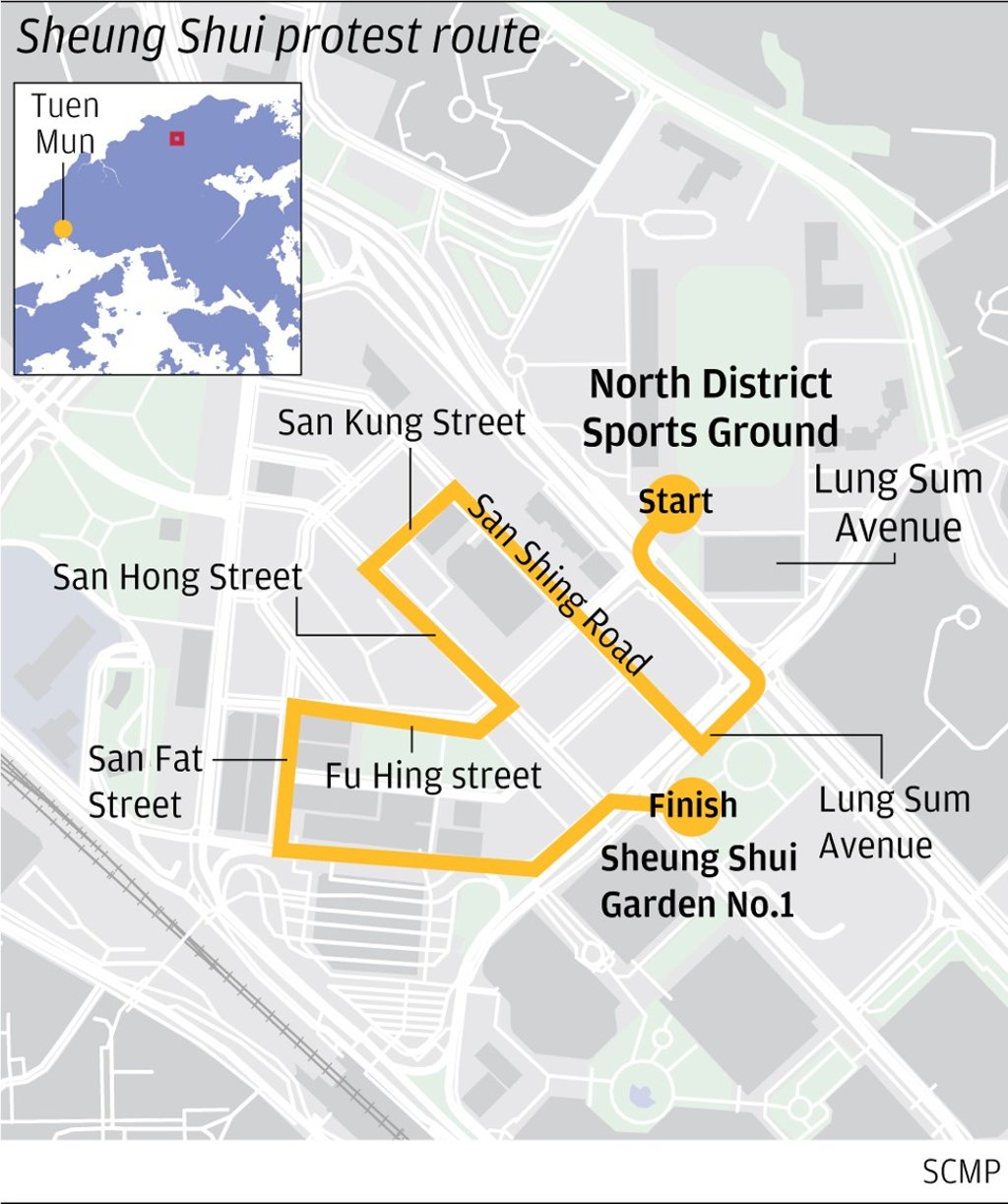Hong Kong border town of Sheung Shui rocked by protest violence and chaos before police finally clear streets at night
- Protesters and police clash near Sheung Shui MTR station shortly after rally against parallel traders and mainland Chinese visitors ends
- Police describe the mostly young protesters as ‘highly organised’ and well prepared to attack them with iron poles and other weapons

Hong Kong’s border town of Sheung Shui was rocked by protest violence and chaos for hours on Saturday before police could clear the streets at night, following a major rally against mainland Chinese visitors and parallel traders.
Police described the mostly young protesters as “highly organised” and well prepared to attack them with iron poles and other weapons which they distributed among themselves in advance.
Sources said at least five police officers were injured in running battles with hundreds of protesters around the railway station in the afternoon, and there were also reports of journalists on the scene being injured.
The trouble broke out after thousands attended the gathering against parallel trading, complaining that the illegal business of goods bought in Hong Kong being smuggled across the border to Shenzhen to be sold for a profit was ruining Sheung Shui.
Clashes began shortly before 6pm when a bridge connecting the Landmark North shopping centre with the MTR station became jammed with people and tempers flared.
Two groups of police officers found themselves surrounded by a large crowd of protesters.
As police vehicles brought in reinforcements to San Wan Road where much of the violence was seen, protesters set up barricades using water barriers and metal fencing.
